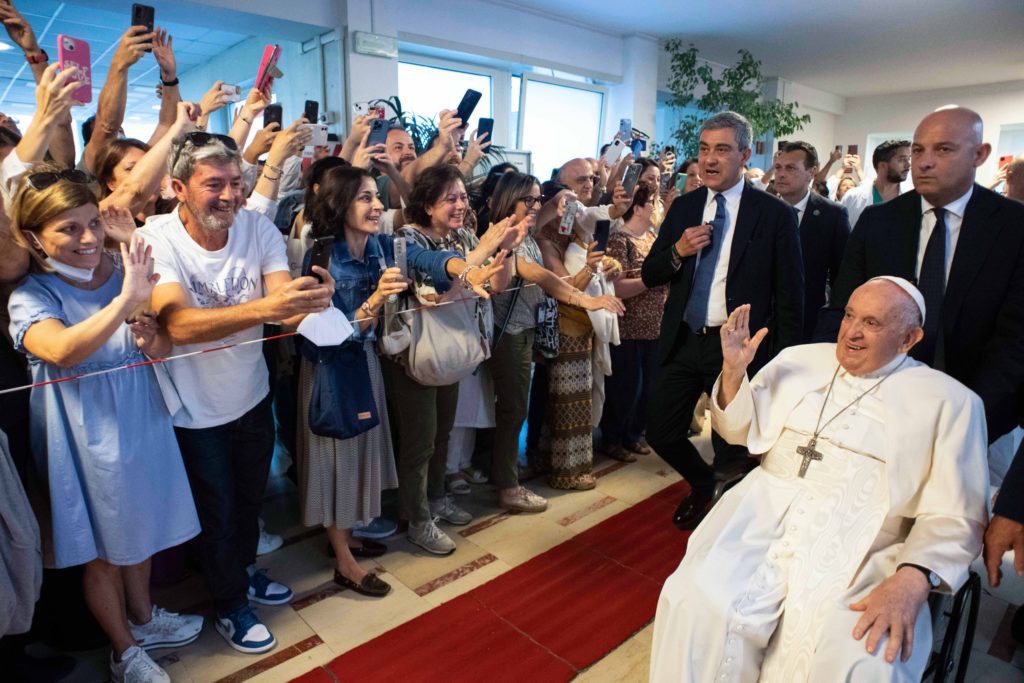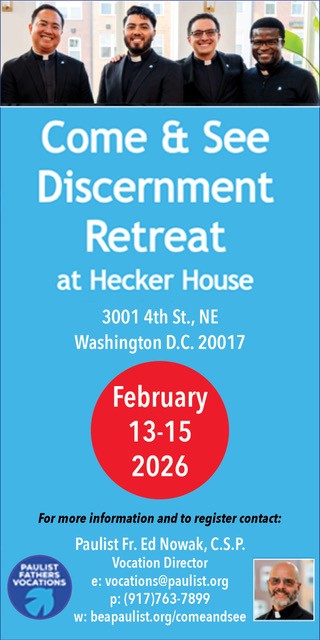ROME — Predicting the future is a bit like what Bob Dole once derisively said of the vice presidency, explaining why he thought it was an easy gig: “It’s indoor work, and there’s no heavy lifting.”
The thing about forecasts of the future is that they can’t possibly be wrong at the time you utter them, and by the time the moment of truth actually arrives, you can always hope people will have forgotten whatever you said in advance.
In that spirit, here are four storylines to watch for Pope Francis in 2024.
This isn’t exactly a crystal ball exercise, since we’re not predicting quite what will happen, simply that these will be important trends to track — but even so, “caveat emptor” still applies, because with the notoriously unpredictable Francis, it’s entirely possible that some bolt from the blue will emerge as the year’s real story.
Papal health
As 2023 came to a close, Francis was once again showing remarkable resilience, exhibiting steady improvement from a bout of severe bronchitis that forced him to cancel a planned Dec. 1-3 trip to Cairo for the COP-28 climate change summit.
Nonetheless, the year also closed with a reminder of the pontiff’s mortality, as he revealed in a recent interview that he’s already made plans for his funeral and burial, including his intention to be entombed in Rome’s Basilica of St. Mary Major.
Last year was a year in which the pope was hospitalized three times, including once for an abdominal operation related to diverticular stenosis of the colon. (As a footnote, the pontiff may be slightly alarmed right now in light of Italian media reports this week that the surgeon who performed the operation, Sergio Alfieri of Rome’s Gemelli Hospital, is under investigation for allegedly taking credit for surgeries performed by others — though, of course, not the one on the pope.)
Francis also continues to suffer from sciatica, the nerve condition that makes it painful for him to stand for very long, and arthritic pain in the knee that’s often confined him to a wheelchair.
None of that is life-threatening, and in that recent interview the pope insisted that he feels basically fine and has no present thought of resigning.
Even after his 87th birthday on Dec. 17, he’s still the oldest reigning pope in the last 120 years, and the combination of age and accumulated health struggles means that his physical capacity is destined to be among the storylines to watch throughout all of 2024.
Travel
Also in that interview with the Mexican TV outlet N+, Francis acknowledged that his physical limits mean his international trips have to be “rethought,” but also seemed to suggest he doesn’t plan to abandon them altogether.
“We will see how things turn out, but over time I’m going to get back to things,” he told journalist Valentina Alazraki.
In concrete, the pope said there’s already a trip to Belgium scheduled for this year. He didn’t specify when, though reports suggest it’s likely to be late September to mark the 600th anniversary of the Catholic universities of Leuven and Louvain. He also said a voyage to Polynesia is “pending,” as is a long-awaited and oft-delayed homecoming trip to his native Argentina.
Some observers thought the odds of such an outing diminished with the recent election of new Argentine President Javier Milei, who at various points called the pope an “imbecile,” a “Communist,” and a “representative of evil,” but Francis appeared to brush off such rhetoric, saying what matters isn’t what a candidate says on the campaign trail, but what that person does once he or she is in office.
Here’s one prediction, with a caution: If Francis does go back to Argentina in this year, comparisons will abound to the seven homecoming trips of St. Pope John Paul II to Poland — and, in a reminder not to be carried away by papal health scares, at least four or five of those trips were widely described as his “final” return, given expectations of his imminent demise.
Now for the caution: Such comparisons will be an apples-and-oranges exercise. Francis probably won’t draw the crowds John Paul did in Poland, and he won’t elicit the same reverential awe. But of course, John Paul started visiting Poland when it was still suffering under a Soviet dictatorship, and his role in national liberation made him a hero. Argentina hasn’t had the same experience, and thus it isn’t fair to expect Francis to stir the same response.
The synod and synodality
When the first edition of Francis’ Synod of Bishops on Synodality wrapped up in October, some observers considered it something of a dud, largely because it failed to produce any breakthroughs on contentious issues such as women, homosexuality, and authority in the Church. One Spanish media outlet styled it, tongue-in-cheek, as the “decaffeinated” synod.
At the time, however, participants and spokespersons explained the lack of concrete results in part as a reflection of the two-stage nature of the process. The summit this past October, they explained, was merely preparatory for the crescendo with the second synod in October 2024.
What that means is that expectations will be especially high for this October’s synod, even though it’s important to remember that even should the gathering adopt specific recommendations on hot-button issues, it’s still up to Francis himself to make the decisions.
More broadly, the synod may well be the best remaining opportunity for Francis to advance his vision of a more synodal Church at all levels, in which the various constituencies in Catholicism — bishops, clergy, religious, and laity — all have a voice. The extent to which Francis is able to move the ball on that vision during 2024, both through the synod and in other ways, inevitably will shape much of the year’s drama.

U.S./Vatican relations
Last year was another rocky year in terms of the relationship between the United States and history’s first pope from Latin America.
On the one hand, there were clear reminders of the seriousness with which Francis takes the U.S. and that there are Americans who clearly enjoy his trust. In his consistory last September, for example, the pontiff named American Robert Prevost a cardinal in his capacity as prefect of the Vatican’s all-important Dicastery for Bishops, and he also gave a red hat to French Cardinal Christophe Pierre, his envoy to the United States.
Yet there were also high-profile echoes of the tensions that have characterized the American relationship with Francis from the beginning, which reached a climax in November with the removal of Bishop Joseph Strickland from the Diocese of Tyler, Texas, and reports that Francis had decided to strip Cardinal Raymond Burke of his stipend and Vatican-subsidized apartment in Rome.
Of course, 2024 is an election year in America, and right now it seems at least possible that former President Donald Trump could stage a return to power, potentially auguring a revival of the tensions between the Vatican and the White House that characterized Trump’s first term.
Famously, for example, Secretary of State Mike Pompeo was given a cold shoulder during a 2020 visit to Rome after publicly criticizing the pope’s deal with China on the appointment of bishops, saying the Vatican was risking its “moral authority.” In response, Vatican officials made a point of noting that Francis would not receive Pompeo while he was in town.
As the election race heats up throughout 2024, the question of the “Catholic vote,” including the extent to which American Catholic bishops, clergy, and laity may take their political cues from the pope, will be much in the air. As a result, managing the inevitable tensions between Rome and the States likely also will be a major storyline throughout the year to come.

